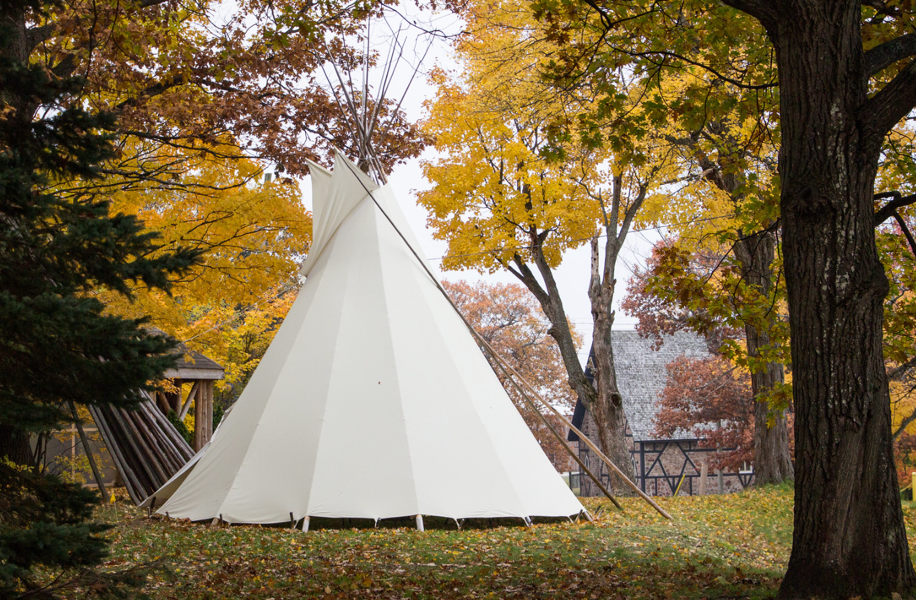Warrior Lawyer Profile: Karen Drake

Brianna Patrick
Allard JD 2025
May 14, 2025
Making Space for Indigenous Law
Some warrior lawyers make their marks in multiple domains. Anishinaabe lawyer Karen Drake is a good example, advocating fiercely for Indigenous rights in both the legal and academic fields.

As a member of Wabigoon Lake Ojibway Nation in northwestern Ontario, Drake has a particular interest in deepening her understanding of Anishinaabe law and constitutionalism. She has dedicated much of her time to learning Anishinaabemowin – the Indigenous language spoken by Anishinaabe communities in various regions of North America. For many communities, language and law are closely intertwined. As such, the commitment to learning an Indigenous language demonstrates her commitment to further understanding Indigenous law. Her Indigenous legal knowledge is well utilized in her capacity as counsel at JFK Law in Toronto, where she assists with implementing Indigenous laws at the community level. She has also been involved in several landmark cases and important scholarly work, advocating for the recognition of Indigenous legal orders in the colonial system.
Improving access to justice for Indigenous communities
Drake is a volunteer member of the legal advisory panel for RAVEN Trust – an organization that strives to protect Indigenous "lands, sovereignty, and ways of being" through fundraising campaigns for Indigenous-led litigation. RAVEN helps to relieve the various financial pressures involved in legal action that often prevent Indigenous communities from accessing justice and integrating their customs, traditions, and legal orders within the Canadian system.
One of the partnership campaigns RAVEN is currently supporting is a lawsuit regarding the Breathing Lands, or “Yehewin Aski” and “Bakitanaamowin Aki” – which refers to a vast area of peatlands in northern Ontario. This is an incredibly important ecosystem to both human and non-human beings as a source of biodiversity, a mitigator of climate impacts, and a knowledge holder. It holds particular importance for the surrounding Indigenous communities and is under threat from various natural resource projects being proposed by the Ontario government and private companies. So far, ten communities have signed on as plaintiffs to this legal challenge to have their own laws, protocols, and jurisdictional authority recognized.

The plaintiffs are asking the court to issue injunctions to halt the permitting process before their consent is given, provide compensation for over a century of damage done to the peatlands, and recognize the requirement that Indigenous communities must give free, prior, and informed consent (“FPIC”) to any development on their traditional territories. FPIC is a necessary component of jurisdictional authority, to ensure communities have a say in what happens on their lands. RAVEN is doing incredibly important work to support access to justice for Indigenous communities in the realm of environmental protection and beyond. Drake is an important contributor to that work as a member of the RAVEN advisory panel.
Bringing Anishinaabe law into Canadian courts
In another climate justice case, Mathur v. Ontario, Drake served as counsel for the intervener Grand Council of Treaty #3 in an appeal before the Ontario Court of Appeal. This case involves a constitutional challenge by several youth plaintiffs to the Ontario government’s climate change legislation. The youth argue that the 2018 Cap and Trade Cancellation Act, which weakened Ontario’s previous greenhouse gas emissions targets, violates their section 7 and 15 rights under the Canadian Charter of Rights and Freedoms.
While many Indigenous communities intervened to support the youth plaintiffs, Grand Council of Treaty #3 was the primary intervener as a representative of twenty-eight Anishinaabe communities across Ontario and Manitoba. Their intervention focused on highlighting the heightened vulnerabilities that Indigenous communities face as a result of climate change – due to their unique connection to land in terms of culture, language, tradition, and identity. Further, they urged the court to consider Anishinaabe legal principles, such as the responsibility to care for earth as kin, in its analysis of the constitutional issues raised. The appeal was allowed and is viewed as an overall win for climate litigation and Indigenous rights.
Educating the next generation of warrior lawyers
On top of fighting to have Indigenous voices and laws heard, Drake is involved in educating the next generation of potential warrior lawyers. As an Associate Professor at Osgoode Hall Law School, she teaches courses on Indigenous Peoples and Canadian Law, and Indigenous Legal Traditions. She has published various articles on the complex interactions between Indigenous rights and law.
For example, she has explored what dispute resolution could look like outside the courtroom. She highlights the risks involved in filtering Indigenous laws through the lens of a liberal constitutional order, which can lead to distortion and misunderstanding. She advocates instead for an institution grounded in Indigenous constitutionalism to facilitate dispute resolution between Indigenous communities and the Canadian government. She specifically considers what this could look like from an Anishinaabe constitutionalism approach. For example, it could include Anishinaabe nations’ capacity to withhold consent to projects in their territory that conflict with Anishinaabe constitutionalism, such as upholding responsibilities to land. This article is just one example of Drake’s dedication to reimagine how law can be better positioned to protect Indigenous rights.
Karen Drake has certainly earned the title of a warrior lawyer in her efforts to create space for Indigenous law as an educator and advocate.
- Centre for Law and the Environment


